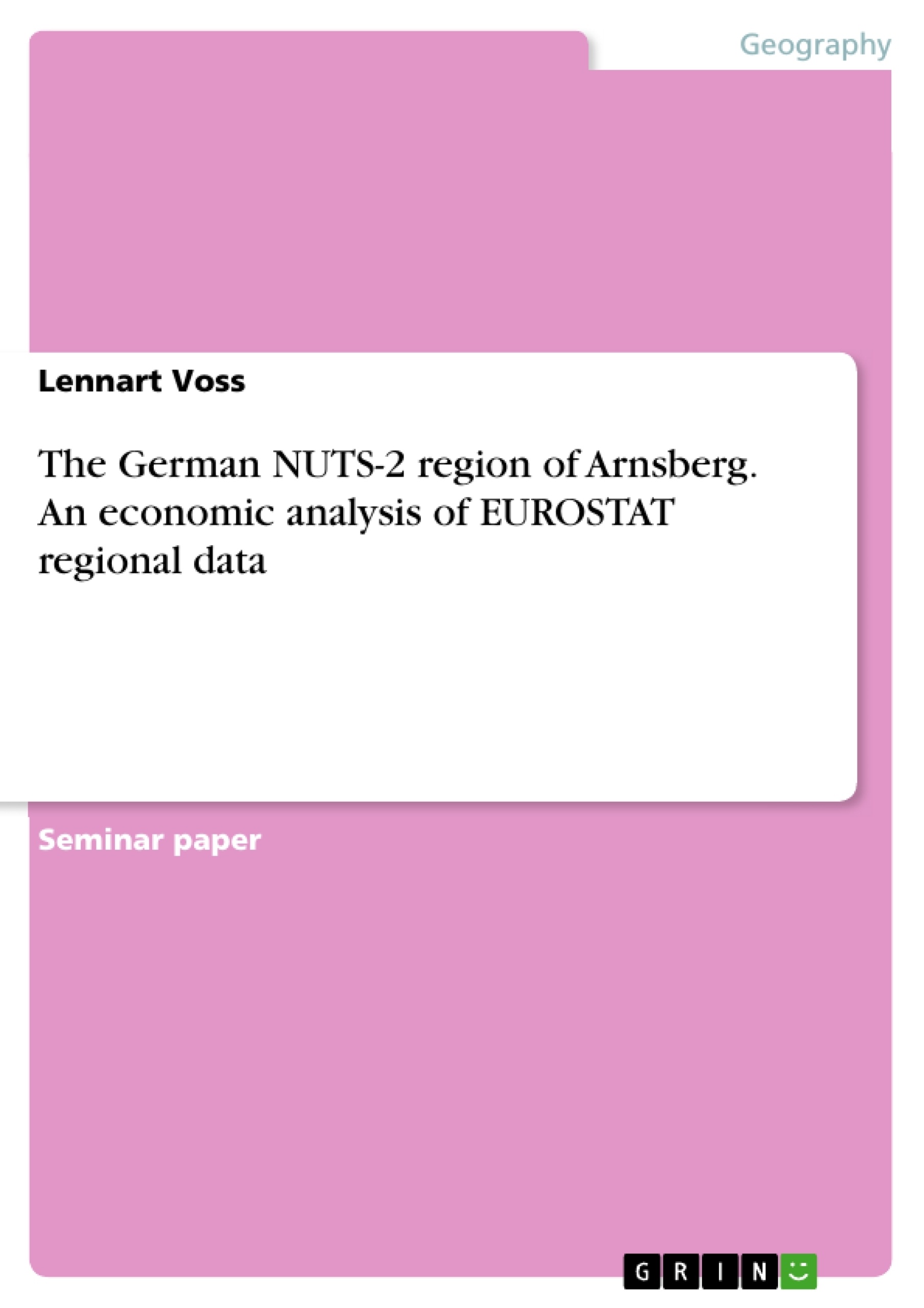This report will be about the German NUTS-2 region of Arnsberg. It will include a brief introduction to the region, stating the most important facts and information. This acquired basic knowledge will then be transferred to the more specific part of the assignment, the analysis of regional data. In this case, the used tool is called EUROSTAT. It is the European Union’s official source for statistics and data concerning the different member states.
The Main part therefore includes charts, diagrams and tables regarding different topics as population, wealth, employment or education. Every chart will be briefly described and analyzed. Furthermore, data of the German state and the European Union is used in addition to the regional NUTS-2 data to compare on national and international level. In continuation to this, location theories and the importance of economic key drivers and agents are discussed and applied to the NUTS-2 region of Arnsberg. The assignment is then rounded-off by a conclusion and the list of used sources.
Inhaltsverzeichnis (Table of Contents)
- Introduction
- The Region of Arnsberg
- Facts
- Infrastructure
- Industry
- Analysis of Regional Data
- A. Make a diagram to compare the level and development of the region's GDP (in PPS) with that of the whole country...
- B. Make a diagram to compare the population development of the region with that of the whole country (use indexes).
- C. Make a triangle diagram to compare the education level in the region, in the country and in EU-28.
- D. Make a diagram (stacked columns) to compare the employment in the three main business sectors in the region with that in the whole country...
- E. Make a regression analysis between the region's employment and its GVA in business sectors (10 sectors).
- F. Make a table with the region's top-ten business sectors based on location quotients. Data as well as calculations should be included in the table...........
- Importance of Key Agents
- A. Firm
- B. Labour
- C. State
- Key Drivers of Arnsberg
- A. Accessibility
- B. Innovation
- C. Entrepreneurship
- Location Theories
- Alfred Weber's "Least Cost Theory"
- Socio-Cultural Issues
- A. Culture
- B. Gender
- Conclusion
Zielsetzung und Themenschwerpunkte (Objectives and Key Themes)
This report focuses on the German NUTS-2 region of Arnsberg, analyzing its economic and social landscape using EUROSTAT data. The report aims to provide a comprehensive overview of the region's demographics, economy, and key drivers, comparing its performance to the national and European level. The report highlights key themes, including:- Economic Performance and Development
- Population Dynamics and Challenges
- The Role of Key Agents and Drivers
- Regional Infrastructure and Accessibility
- Socio-Cultural Factors
Zusammenfassung der Kapitel (Chapter Summaries)
The introduction presents the overall purpose and methodology of the report, emphasizing the utilization of EUROSTAT data to analyze the region's performance. The "Region of Arnsberg" section provides a concise overview of the region, including its location, demographics, infrastructure, and key industries. The "Analysis of Regional Data" section delves into a detailed analysis of various regional data points, using charts, diagrams, and tables to compare Arnsberg's economic and demographic performance with national and European averages. Topics covered include GDP, population development, employment, and educational attainment. The "Importance of Key Agents" section examines the impact of firms, labor, and the state on the region's economy. The "Key Drivers of Arnsberg" section explores key factors driving regional development, including accessibility, innovation, and entrepreneurship. The "Location Theories" section briefly introduces Alfred Weber's "Least Cost Theory" and its relevance to the region. The "Socio-Cultural Issues" section examines the impact of culture and gender on the region's development.
Schlüsselwörter (Keywords)
The report focuses on the German NUTS-2 region of Arnsberg, analyzing its economic and social landscape using EUROSTAT data. Key terms and concepts include regional development, economic performance, population dynamics, key agents, infrastructure, accessibility, innovation, entrepreneurship, and socio-cultural factors.- Quote paper
- Lennart Voss (Author), 2015, The German NUTS-2 region of Arnsberg. An economic analysis of EUROSTAT regional data, Munich, GRIN Verlag, https://www.grin.com/document/317273




